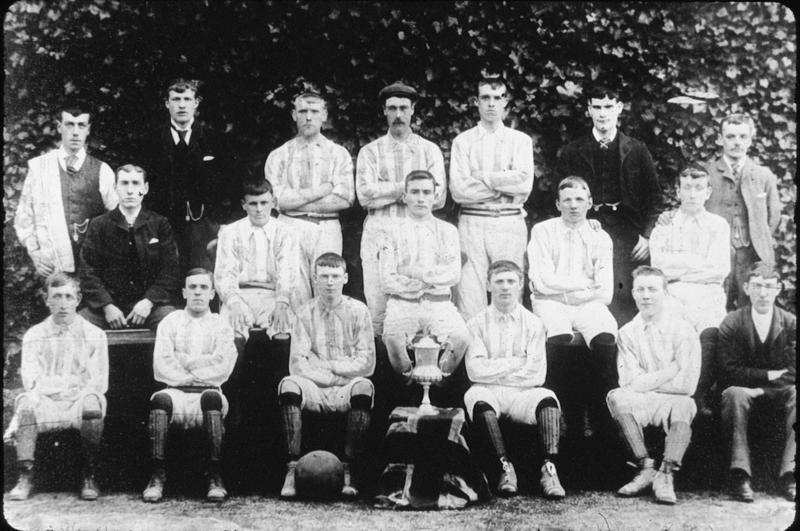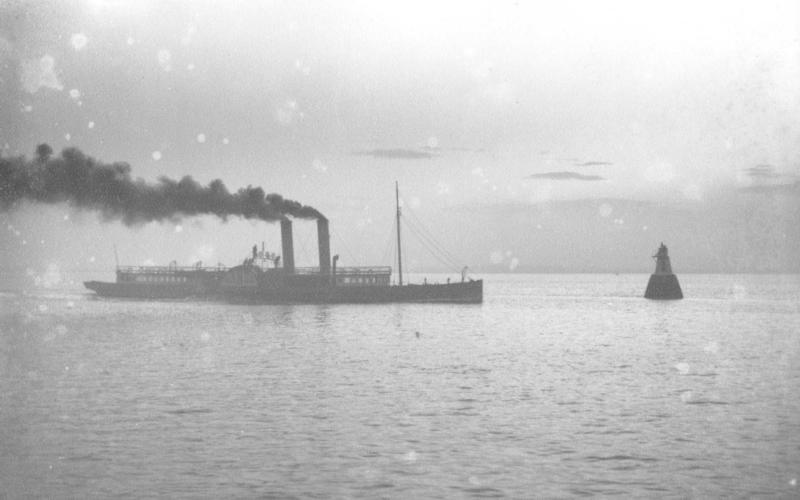Learn about the history of Newton Park and how it began as a football ground.
The Original Grounds
The original pitch in Bo’ness overlooked the Craigmailen United Free Church and was used by the town’s first club, Vale of Kinneil. It was not long before a club calling itself Bo’ness was set up and played on the site of the present-day Old Kirk. The two clubs amalgamated in 1882. Robbed of their playing pitch in 1885 due to the construction of the new church, the club moved to the quaintly named “Soo Cra Park,” situated a short distance south-west of the current Newtown Park.
The town was expanding rapidly at that time, with heavy industries dominating the scene. Newtown Park was then opened within two years, on the site of an old mine-workings (later to have an effect) and started off as a very spartan location, noted for the tattie field just over the south side.
The Clubs
Bo’ness FC were now firmly ensconced at the park and the club created a Junior club called Our Boys, in 1895, who used Newtown Park until September 1898 when they moved to Castleloan Park, just down the road. A new Junior side called Newtown Thistle appeared in 1903 and played at the main ground until they ceased operations in August 1905.
The ground was now being used for local cup finals at both Juvenile and Junior level. The first junior grade final at Newtown was in the Bo’ness and District Cup, when Our Boys defeated Niddry Violet 4-3 after a replay. The next big final was the Linlithgowshire County Cup Final in 1904, when Bo’ness side Vale of Grange beat Linlithgow Rose 4-1. Then in 1907 Our Boys beat Vale of Grange, in the same competition, after a replay.
A new attendance record of 3000 was created in September 1907 when Cowdenbeath were beaten by Bo’ness in a Qualifying Cup replay. World War I saw the 1914/15 season being completed as best as possible and the last match at Newtown during the war was in August 1915 when Bo’ness played a team from HMS Woolwich, in aid of Carriden House Convalescent Hospital.
Expansion & Improvement
In August 1921, with Bo’ness as founder members of the second division, the ground was purchased from the Duke of Hamilton’s trustees for £160. Many improvements were made at Newtown Park. Work was carried out by local miners affected by an ongoing industrial dispute. The length and breadth of the pitch were amended to meet first league requirements and it is said soft, velvety turf was laid which came from the Bathgate hills. The surrounding ground was enlarged and terraced and work began on a new grandstand. The stand cost £2,298.
Highs & Lows
In July 1924, another new junior club popped up at Newtown Park, the short-lived Bo’ness Juniors, who were runners-up in the Western division of the East of Scotland League in their only season. In 1925 it became clear that two sides sharing was not a suitable arrangement and the club intimated their problems to the EOSJFA. The club were willing to compete in cups but asked to withdraw from the League. Their request was turned down and so they folded.
"The 1920s and 1930s saw a great economic depression and many clubs met their end during this time."
fields['text']) echo $section->fields['text']; ?>
There was a brief flirtation with the first division in 1927/28, the first home match with Falkirk attracting a crowd of, unofficially, 10,000, Bo’ness winning 2-1. After relegation, money was really tight and the club announced an intent to liquidate in February 1933. Although the club reformed in May 1933, the ground was no longer theirs. It was leased out to the club and again offered for sale but the precarious finances of the new club would not allow it. By 1937, the liquidators were trying to sell the ground to the Bo’ness Town Council and for the first time the prospect of a municipal park was raised.
Meanwhile, another Bo’ness Junior club, this time Cadora, were polling members on a move to share Newtown Park with Bo’ness FC. Whilst the vote narrowly passed, they forgot about the side that currently shared the ground, works team Ballantine’s Welfare. Plans were soon dropped as the works team refused to take up Cadora’s ground at Drum Park. World War II then came along spelt the end for the existing clubs in the town, the ground being used by the Royal Navy for training and exercise.
A new Junior club was formed at the beginning of August 1945, Bo’ness United. The club had initial problems securing a long-term lease from the council but by the end of their first season it was all sorted out. Moving forward to the 1970s and the ground was now owned by Falkirk District Council, who by 1977 had declared the east side of the stand a danger to the public.
Becoming a Park
It took until 2012 before the stand was taken down, and from that point thoughts of improvement took place. Falkirk District Council eventually agreed in 2015 to transfer ownership of the ground to the Newtown Park Trust, whose aim was to develop the ground into a community facility.
A necessity was going to be an all-weather pitch but work had to be stopped in June 2018 when it was discovered there were old mine-workings under the half-way line. Safety work meant that the pitch could not be dug up until April 2019.
With the new community pitch up and running from October 2019, there is now a further Junior team at Newtown. Bo’ness United Juniors have no connection with Bo’ness United but obviously like the name!
By Don Burns, Great Place volunteer 2020.

